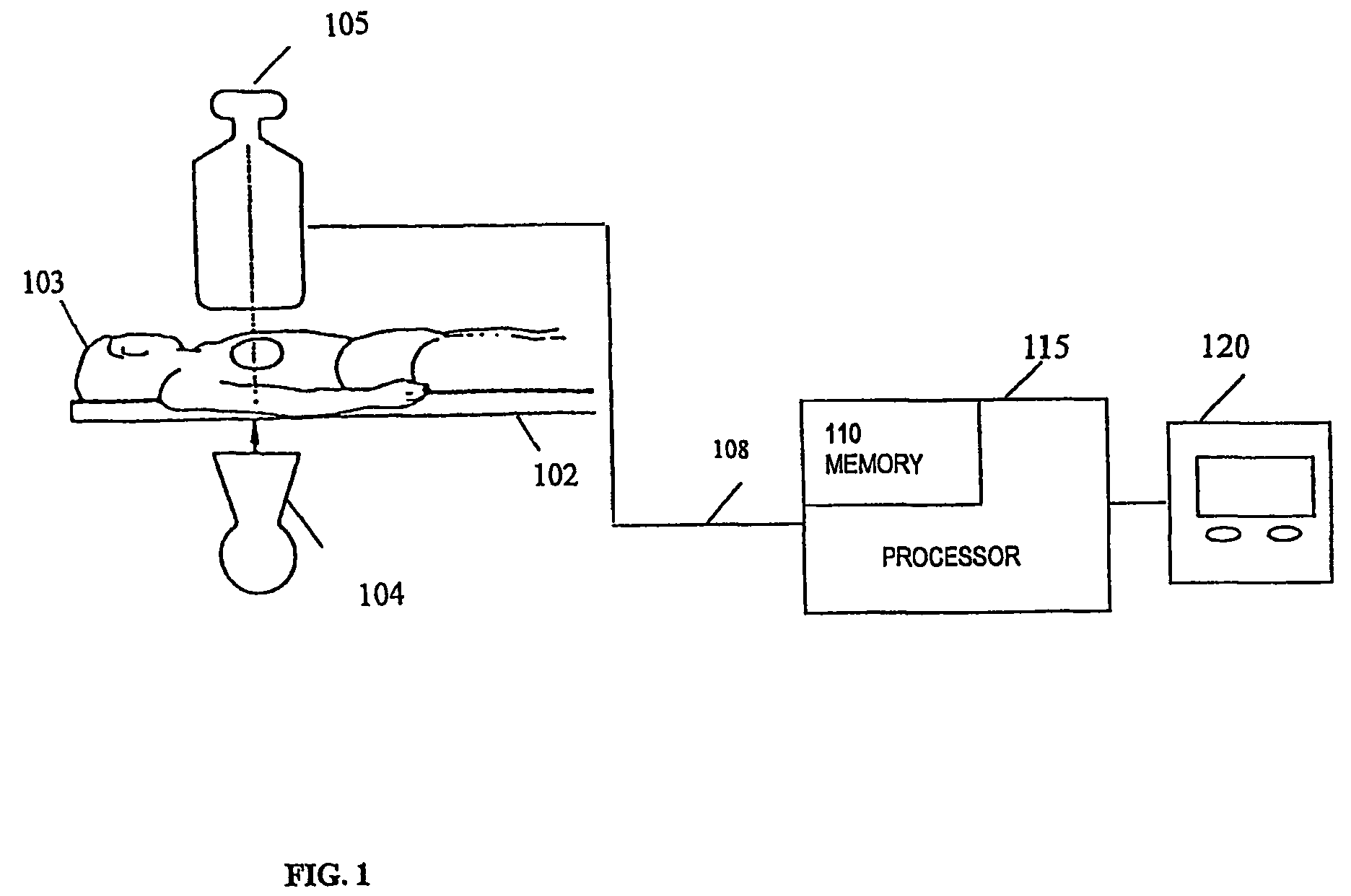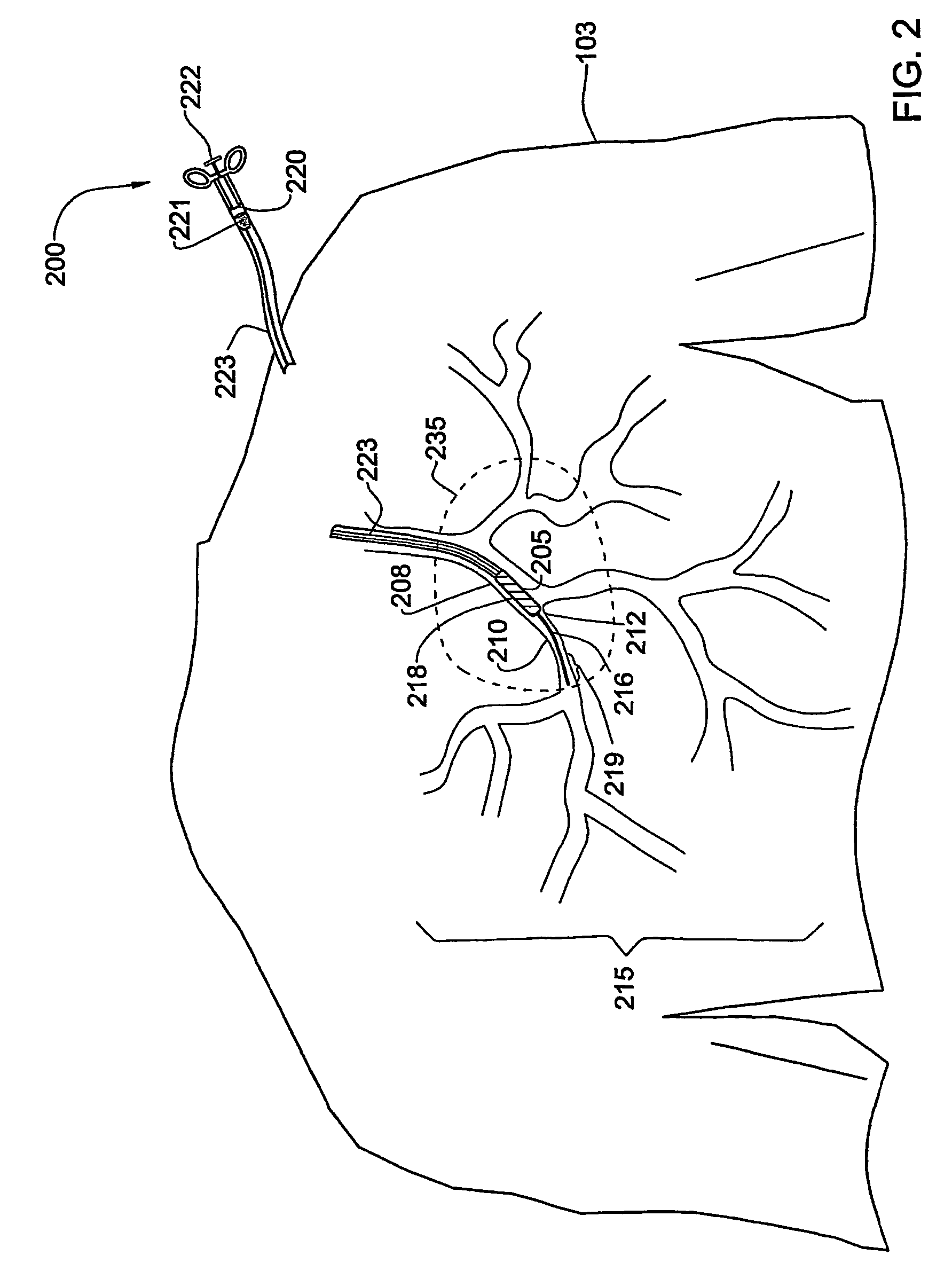Method and system for positioning a device in a tubular organ
a technology of tubular organs and positioning devices, which is applied in the field of positioning devices in tubular organs of the body, can solve the problems of increasing the risk of artery injury, total blockage of the treated artery, and significantly increasing the chance of subsequent renarrowing of the artery
- Summary
- Abstract
- Description
- Claims
- Application Information
AI Technical Summary
Benefits of technology
Problems solved by technology
Method used
Image
Examples
Embodiment Construction
[0040]Referring first to FIG. 1, shown is a system for positioning a catheter or intravascular device at a desired location within an artery in accordance with one embodiment of the invention. The system comprises a table 102 upon which a patient 103 lies. An X-ray source 104 is located under the table 102 for projecting X-rays through the patient 103 to an X-rays camera 105 located above the table 102, diametrically opposite the X-rays source 104. The X-ray camera 105 generates video signals 108 representing one or more X-ray images of the patient 103. The video signals 108 are stored in a memory 110 of a processor 115. Images captured by the X-ray camera 105 may be viewed on a monitor 120 either in real-time or after being retrieved from the memory 110.
[0041]FIG. 2 shows a catheter 200 the tip 205 of which bas been positioned at an aperture 212 of an artery 210 that is part of an arterial tree 215 of the patient 103. The catheter 200 may be used to deliver an intravascular device ...
PUM
 Login to View More
Login to View More Abstract
Description
Claims
Application Information
 Login to View More
Login to View More - R&D
- Intellectual Property
- Life Sciences
- Materials
- Tech Scout
- Unparalleled Data Quality
- Higher Quality Content
- 60% Fewer Hallucinations
Browse by: Latest US Patents, China's latest patents, Technical Efficacy Thesaurus, Application Domain, Technology Topic, Popular Technical Reports.
© 2025 PatSnap. All rights reserved.Legal|Privacy policy|Modern Slavery Act Transparency Statement|Sitemap|About US| Contact US: help@patsnap.com



